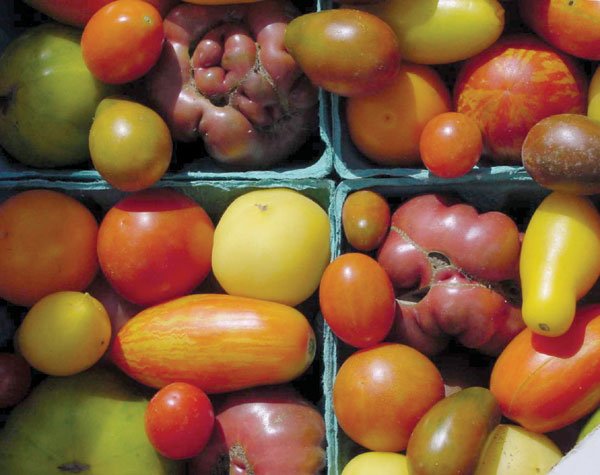Tired of those processed vegetables that shine in the light but
taste like they were made in a factory?
If so, you are not alone.
More and more people are turning to heirloom vegetables to enjoy
fresh taste, even if the fruits and vegetables do tend to bruise a
little more.
Tired of those processed vegetables that shine in the light but taste like they were made in a factory?
If so, you are not alone.
More and more people are turning to heirloom vegetables to enjoy fresh taste, even if the fruits and vegetables do tend to bruise a little more.
To be considered an heirloom, the plant must have been open pollinated, meaning it was pollinated naturally and not by gardeners, and must come from a strain grown for at least 50 years. The cutoff date to be considered an heirloom varies, but it is usually in the 1940s, when the hybridizing plants first started becoming popular.
The definitions are not always the same for which plants to include in the heirloom category. Some people are more conservative about what they include, and some list all the traditional plants.
“In the past 10 years, there has been a lot more interest ever since the food movement became popular,” said Zea Sonnabend, a grower from Watsonville. “It’s become popular ever since restaurants started serving fresher food and people started appreciating the slow-food movement.”
Sonnabend, who works with the Ecological Farming Association based out of Watsonville, grows heirloom tomatoes and leeks, which she received from a farmer from Yugoslavia. She also grows Peruvian fava beans, or broad beans, which earned their name after being passed down for generations in Peru.
“My leeks have a much longer white part than their commercial counterparts,” Sonnabend said. “But they are so big, they have trouble fitting in a box. There is no difference in taste with the leeks, but the tomatoes have much more flavor.”
Most heirlooms are grown organically, and they tend to be a lot more delicate than the hybrid fruits and vegetables, which are bred to be shipped long distances.
“Most farmers do direct marketing so the customer can have the taste,” said local grower Zea Sonnabend. “Many of the fruits and vegetables don’t ship well.”
Mary Philips Gonzalez, who grows and sells heirloom tomato seedlings at BlueFrog Gardens in Morgan Hill, says there are two main reasons people are interested in heirlooms – quality and nostalgia.
“There is a whole school of thought that says they are handed down generation to generation because they are so good,” Gonzalez said. “A lot of people grow them because they are interested in preserving the variety of species we have. It’s a whole mystique. It’s a cult.”
Sometimes new seeds are required to maintain a crop if the plants accidentally become cross-pollinated with different types of fruits or vegetables, Gonzalez said. That is why it is important to keep plants like pumpkins and cantaloupes apart. Take a little time to plan out your garden to allow maximum separation.
“Most people who raise their own seeds have to bring in fresh seeds to maintain their plants,” Gonzalez said. “But I’ve found that if I purchased the seed, the first time the yield was lousy. I saved the seeds and planted them, and next year I got a tremendous product. I don’t know why it was so productive.”
Gonzalez said she grows about 50 to 60 different varieties of tomatoes. She is one of the many people who take advantage of local farmer’s markets to sell items.
The farmers markets in Gilroy and Hollister have closed for the season, but Morgan Hill’s is open year round, at 3rd and Depot streets, Saturdays from 9am to 1pm.











